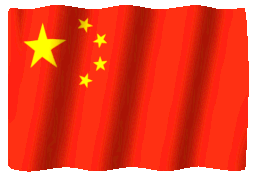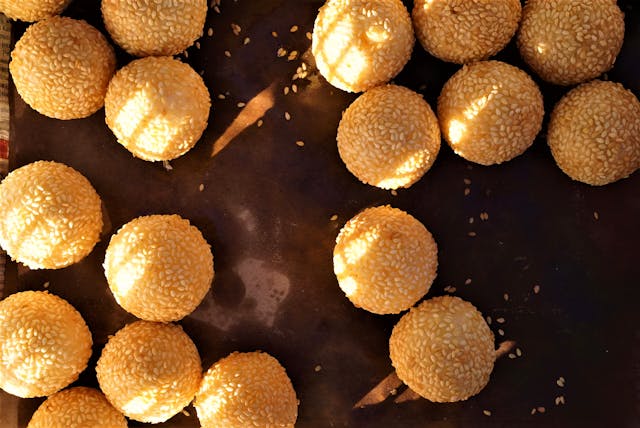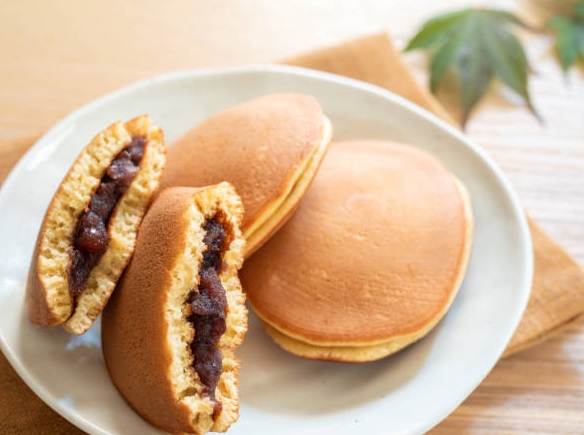
![]() let’s go to China
let’s go to China ![]()
Sesame Balls (Jiān Duī) and their Charm
Sesame balls, known in China as Jiān Duī, are a sweet delicacy that has a unique appearance and flavor. This delicious traditional dessert is a crispy golden sphere, topped with toasted sesame seeds that add a touch of nutty flavor. Biting into them reveals a soft, sticky core made of lotus paste, red bean paste, or any other sweet filling that varies by region and occasion.
The charm of Jiān Duī does not lie solely in its exquisite flavor and texture. This dessert is also a profound symbol of fortune and happiness, especially during holidays like Chinese New Year. Chinese families believe that sesame balls represent prosperity due to their round shape, which is a symbol of unity and wholeness. Additionally, the golden sphere is associated with wealth and good luck.
The preparation process of Jiān Duī is a delicate dance between the dough made of glutinous rice and the sesame seeds that cover them. Every meticulous detail in its preparation shows the mastery of Chinese confectionery and reinforces its cultural importance. The contrast between the crunchy shell and the soft interior creates a multi-sensory experience that has captivated generations and continues to seduce those seeking a sweet that offers both gustatory pleasure and deep symbolism.
In short, sesame balls are much more than just a dessert; They are an essential element of Chinese pastries and a festive symbol loaded with meaning. We invite you to discover the magic and history behind this iconic Chinese sweet, a journey that is sure to delight your senses and your curiosity.
History and Origins of Jiān Duī
Jiān Duī, also popularly known as sesame balls, has its roots in the Tang dynasty, which flourished between 618 and 907. This delicacy began as a luxury in the imperial court, where it was a symbol of prosperity and good omen. Over time, it became popular in various regions of China, gaining acceptance not only among royalty but also among common people.
During its more than a thousand years of history, the Jiān Duī has evolved in both preparation and meaning. This round delicacy, known for its crispy sesame-covered exterior and soft interior, is a testament to China’s rich culinary heritage. There are mentions of Jiān Duī in ancient writings and poetry, highlighting its cultural importance.
Throughout generations, the Jiān Duī has been associated with festivals and celebrations, particularly the Lunar New Year, where its round shape is believed to symbolize unity and perfection. Legends and traditions have played a crucial role in the preservation of this dessert, passing down valuable family stories and cultural values.
Various regions of China have adopted and adapted Jiān Duī, integrating local variations into their recipes. In the south, the filling may include red bean paste, while in the north it may be lighter, using syrups and fruits. This diversity demonstrates how Jiān Duī has gone from being an exclusive luxury to a cultural emblem shared throughout China.
The story of the Jiān Duī not only gives us a fascinating insight into its origins and evolution, but also a deeper understanding of its cultural importance and resilience. Through the centuries, it has remained in the collective memory, celebrating both the happy moments and the challenges overcome in the lives of the Chinese.
Chinese Culture and Gastronomy: Beyond Desserts
China is a country known for its vast culture and rich gastronomic tradition. Chinese cuisine is famous not only for its unique flavors and diversity, but also for the deep connection it has to the country’s history and way of life. Sesame balls, known as Jiān Duī, are just a small sample of what Chinese cuisine has to offer.
In addition to desserts, China’s culinary heritage includes a wide variety of savory and sweet dishes that reflect the country’s regional influences and ethnic diversity. It is common to find a feast of flavors on Chinese tables, ranging from the classic Peking duck, with its crispy skin and juicy meat, to the famous Canton dim sum, which represent small and tasty dishes served in bamboo baskets.
Traditional Chinese festivals also play an important role in gastronomy. Chinese New Year, for example, is celebrated with a series of symbolic foods that represent good fortune and prosperity. During this time, it is common to see tables adorned with whole fish, glutinous rice cakes (Nian Gao), and, of course, the popular sesame balls. Each dish has a special meaning and is prepared with the same care and devotion given to ancient traditions.
Exploring Chinese culture also means immersing yourself in their daily practices and their unique way of understanding life. The street markets, full of exotic aromas and vibrant colors, offer an authentic and enriching experience. Here, you can taste a variety of freshly prepared foods, observe local life, and gain a deeper sense of Chinese culture.
The experience of tasting a Jiān Duī in China is not limited solely to the act of savoring a delicious dessert; It becomes a gateway to a world full of history, tradition and culinary diversity. This comprehensive approach to Chinese gastronomy provides the traveler with a complete perspective that goes beyond the simple pleasure of the palate, leading them to discover a fascinating country full of wonders to explore.
Sesame Balls (Jiān Duī) Recipe: Step by Step to Make Them at Home
Preparing delicious sesame balls (Jiān Duī) at home can be a rewarding and accessible experience for everyone. Below, we offer a detailed recipe that will allow even those with little cooking experience to enjoy this traditional Chinese dessert.
Ingredients:
200 grams of glutinous rice flour
30 grams of sugar
120 ml of warm water
100 grams of sweet red bean paste
100 grams of sesame seeds
Vegetable oil for frying
Instructions:
Step 1: Preparation of the dough
In a large bowl, mix the glutinous rice flour and sugar. Add the warm water little by little while kneading the mixture. Continue kneading until you obtain a soft and homogeneous dough.
Step 2: Formation of the balls
Divide the dough into small golf ball-sized portions. Take a portion and flatten it slightly in the palm of your hand. Place a teaspoon of red bean paste in the center and wrap it with the dough, sealing the edges well. Form a round and uniform ball.
Step 3: Coated with sesame
Lightly moisten the surface of the balls and roll them in the sesame seeds, making sure they are well covered.
Step 4: Frying
Heat the vegetable oil in a deep skillet over medium heat. Fry the sesame balls in batches, making sure not to overcrowd the pan. Cook for 4-5 minutes or until the balls are golden and crispy. Remove them with a slotted spoon and let them drain on absorbent paper.
Helpful Tips:
For a uniform texture, ensure that the dough is well mixed and free of lumps.
Keep an eye on the temperature of the oil: if it’s too hot, the balls can burn on the outside before fully cooking on the inside.
For a variation, you can replace the sweet red bean paste with other fillings such as lotus paste or black sesame cream.
By following these simple steps, anyone can prepare Jiān Duī at home and enjoy a snack that combines tradition, sweetness and an irresistible crunchy texture.
Recommended Places to Taste Jiān Duī in China
For those who want to experience the authentic taste of Jiān Duī during their trip to China, there are various places that promise an unparalleled culinary experience. These places are not only recognized for the quality of their ingredients, but also for the mastery in the preparation of this delicious dessert.
We begin in Beijing, China’s vibrant capital, where the hustle and bustle of the city mixes with culinary tradition. In the heart of this metropolis is the Quanjude Bakery, famous for its traditional sweets. Here, Jiān Duī are crispy on the outside, soft and slightly sweet on the inside, a true delicacy that encapsulates the authenticity of Chinese flavors.
Another must-see destination is Shanghai, the elegant port city. At the local Yuyuan market, visitors can delight in freshly made Jiān Duī from street stalls. This market not only offers a wide range of foods and flavors, but also allows you to immerse yourself in an atmosphere rich in history and culture.
Additionally, in the city of Guangzhou, known for its vibrant food scene, Panxi Restaurant stands out for its prowess in Cantonese cuisine. Their Jiān Duī are finely crafted, with a light texture and flavor that leaves a lasting impression. This establishment not only offers exquisite desserts, but also a dining experience in a traditional setting, with serene gardens and historic architecture.
Finally, if the opportunity arises to visit Xi’an, known for its famous Terracotta Warriors, the Muslim market is a must-see. Here, the fusion of Chinese and Muslim influences creates a unique Jiān Duī experience. Street vendors, with their recipes handed down from generation to generation, offer sesame balls that have a distinctive flavor and unmatched texture.
Each of these locations offers a unique window into the heart of Chinese culinary culture, ensuring that every bite of Jiān Duī is a true feast for the senses. By exploring these destinations, travelers not only savor an exquisite dessert, but also an essential part of China’s rich cultural heritage.



